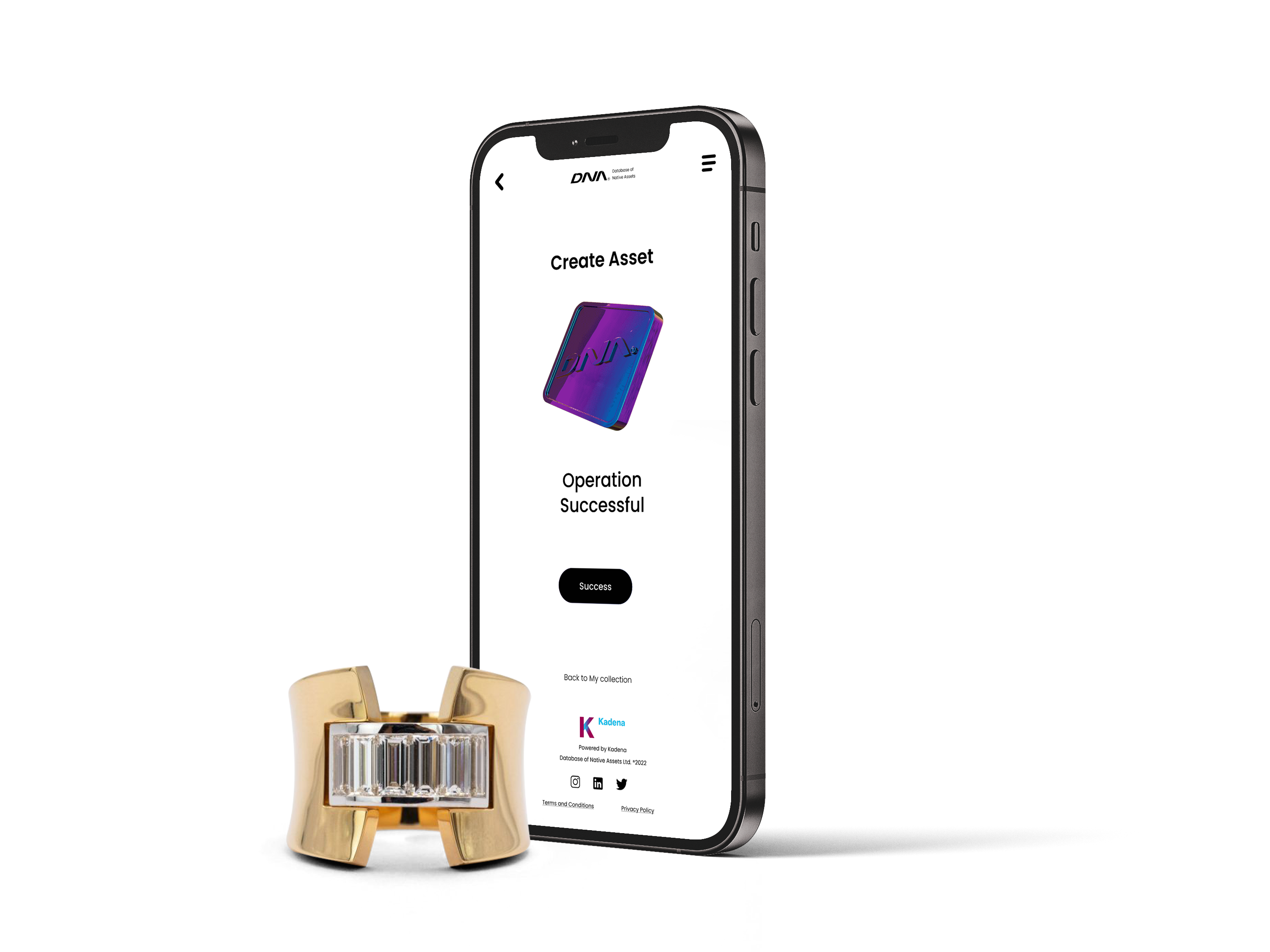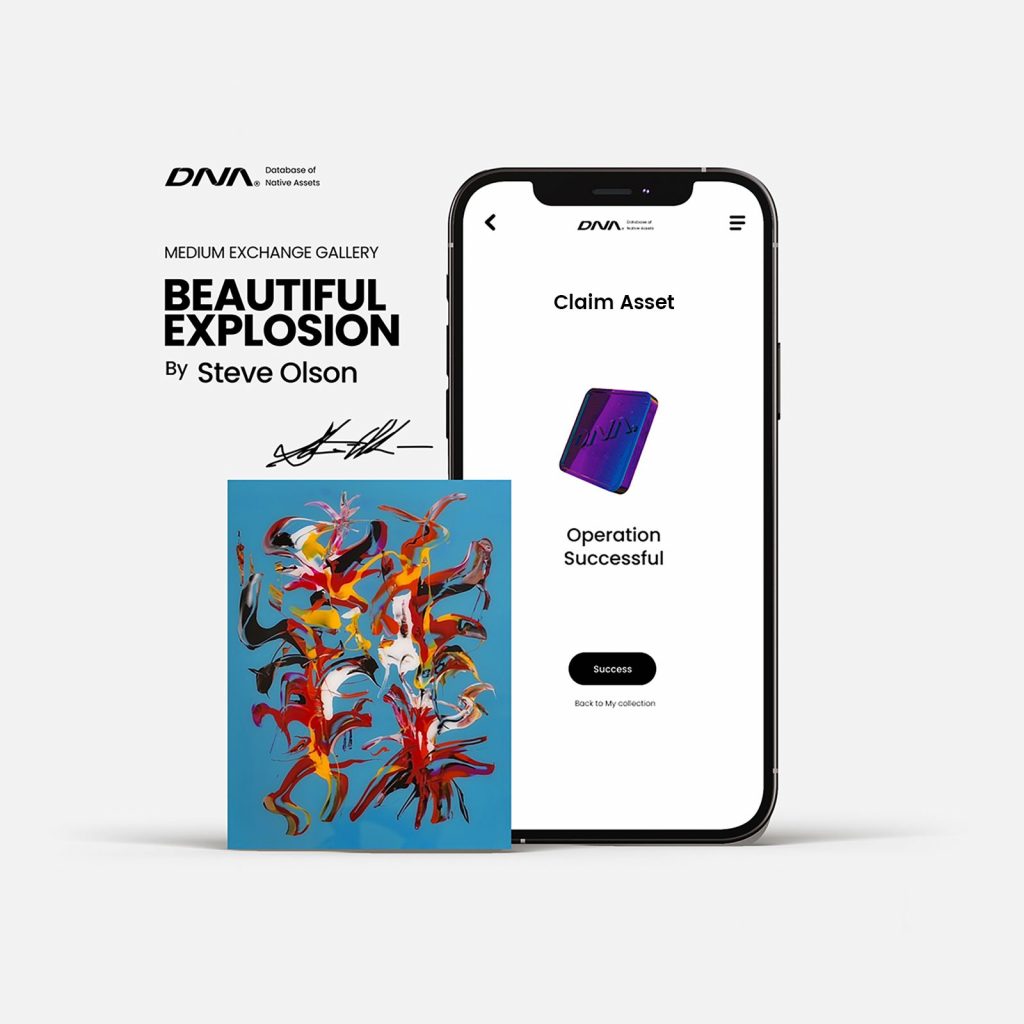-
Sotheby’s sells valuable jewellery verified by the new tech from UK start-up Database of Native Assets (DNA)
-
DNA guarantees provenance boosting confidence for buyers and sellers and tackles the blight of counterfeiting head on
-
A plug & play solution that facilitates brand transition to Web 3.0
-
A blockchain technology with the potential for mass adoption
-
A green blockchain solution helping brands improve ESG by tracking their products until end of life
A new blockchain powered technology that protects ownership and tackles the growing blight of counterfeiting has been quickly adopted by businesses keen to protect themselves and their customers.
UK based DNA, who officially launch their tech solution this week, create unique digital passports which prove authenticity and ownership of jewellery, collectibles, art, rarities and luxury goods.
The technology makes virtually any physical product instantly verifiable
storing every historical transfer of ownership, and other information about the product, on a unique DNA digital passport (Native Asset) which is then safeguarded on the Kadena blockchain platform.
DNA is built for mass adoption and users of all skill sets as a plug & play solution that facilitates a brand’s transition into Web 3.0 without the need for cumbersome and complicated blockchain infrastructure. From first sale through to every resale, DNA guarantees provenance which boosts confidence for buyers and sellers alike.
For brands this also creates a new and more meaningful connection with consumers/owners which remains in place for the entire lifecycle of the product.
The innovation was given the ultimate seal of approval this week when Sotheby’s announced the sale of a highly valuable Paraiba Tourmaline ring from Austrian jeweler Schullin verified with a DNA Native Asset. This is the first time any auctioneer has sold a piece of jewellery guaranteed in this way.
The handmade platinum ring features a 49,88ct natural oval-cut Paraiba Tourmaline and 60 baguette-cut diamonds and is worth between £140,000-£180,000. The ring will be auctioned on Nov 9. The Sotheby’s catalogue can be seen here.
The jewellery sector has been quick to wake up to the potential of DNA which can protect gems, watches, stones and other pieces as they are sold, resold or inherited through generations.
Lukas Schullin, the manager at Schullin Wien, said: “We’re very impressed by what DNA has created and the solution they offer – it made sense to use the technology for the upcoming Sotheby’s sale, which features a unique piece.

“We’ve explored a number of digital verification solutions in the past but none work as effectively and seamlessly as this one.
“For us, simplicity and ease of use is what sets it apart. The fact it can be used by anyone makes it the perfect solution for all of our customers including those who may not be particularly tech savvy.
“It offers the power and security of the blockchain without all the headache of having crypto currency and a digital wallet.”
DNA co-founder and CTO Abraham Milano, said: “The challenge and objective of DNA is to harness the power and possibilities of the blockchain for practical real world uses in a way that is accessible to all.
“There is a certain anonymity about products on the web which makes fraud and counterfeiting rampant. Our mission is to fix that so that brands, creatives and their customers are protected.
“There are many exciting things that can be built upon this technology that will improve the way brands interact with their customers and how they set up a more responsible circular economy.”
DNA co-founder Douglas Jakobi said: “We’re delighted with the reaction to our service and early adoption of the technology by some key sectors including jewellery and art.
“Our mission is to empower a safer & more reliable online marketplace bringing the power & security of the blockchain to the mainstream with a simple to use platform that bridges the physical and digital worlds.
“We enable brands to tokenize their physical products to fight counterfeiting, empower and reward loyalty and ownership.
“In short, we strengthen the relationship between brands and their customers by helping build consumer trust.”
Other sectors are also adopting the technology. Leading US artist and Skateboarding legend Steve Olson’s recent gallery show in New York “Beautiful Explosion”, DNA’s first pilot project, used the technology to provide certificates for all the works sold.
The technology is a highly sustainable solution for brands interested in improving ESG. It is built on Kadena’s environmentally friendly Proof-of-work-layer-1 blockchain.
Instead of running on one chain, Kadena operates on 20 chains concurrently which lowers gas fees, shortens time in queues, and is environmentally friendly.
Whether using 1 or 100 blockchains, the energy needed for transactions is the same. Kadena’s blockchain technology makes it so that the more it scales, the more environmentally friendly it becomes.
The technology has the added benefit of indirectly patenting design by leveraging the intrinsic nature of blockchain – everything that is added to a passport can be traced back to a specific point in time. This can directly help jewelers or artists protect original designs or creations, creating a repository of their work.
DNA also gives brands direct access to the consumer/owner community throughout the entire lifespan of a product, enabling them to set up a secure and reliable resale market and embed royalties for secondary market transactions.
Kadena spokesperson Joel Woodman, said: “DNA is an exciting business bringing a much needed service/technology to life, and we’re proud they’re building this on Kadena. Kadena believes in the potential of blockchain to revolutionize how the world interacts and transacts, and businesses like DNA are bringing this vision to life.”
Counterfeiting and resale – facts and stats
The counterfeit market is valued around $4.5 trillion — 60–70% of that involves luxury goods (Harvard Business Review).
As many as 10% of all branded goods sold may be counterfeit. It is estimated that 80% of us have handled fake or falsified goods (whether wittingly or not). Sales of luxury goods have soared in recent decades, but fakes have grown even faster: one estimate suggests that counterfeits have increased by 10,000% in two decades.
The luxury resale market has grown to $33bln (Bain). Brands have little visibility of this or even of customers who purchase their items through 3rd parties. DNA tokens give them a way to engage with their customers, directly or indirectly, and reward their loyalty and ownership.
How DNA works
-
Database of Native Assets is a blockchain platform that bridges the physical and digital worlds. With DNA, brands can tokenize their physical products creating a permanent and untamperable digital record of them to fight counterfeiting, empower a safer & more reliable online marketplace and reward loyalty and ownership.
-
Tokens (we call them Native Assets) are simple to create – you only need a browser. Users don’t need a digital wallet or any experience of crypto currency.
-
Brands can add whatever information they want about a product including detailed descriptive information, brand policies, images, and designs.
-
Once a Native Asset is configured the simple click of a button creates it and then locks it into the Kadena blockchain.
-
Crucially DNA is able to add any form of unique brand security information (product identifier information/hallmarks etc) to the Native Asset and can work with brands to bridge each Native Asset with its physical item by adding additional anti-counterfeiting measures (such as NFC chips, QR codes etc).

